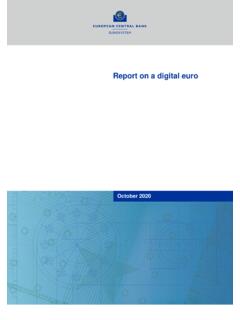Transcription of Pearson BTEC Level 3 Diploma in Business Administration
1 Pearson BTEC Level 3 Diploma in Business Administration Specification Combined (Competence and Knowledge) qualification First registration September 2014 Issue 4 Edexcel, BTEC and LCCI qualifications Edexcel, BTEC and LCCI qualifications are awarded by Pearson , the UK s largest awarding body offering academic and vocational qualifications that are globally recognised and benchmarked. For further information, please visit our qualifications website at Alternatively, you can get in touch with us using the details on our contact us page at About Pearson Pearson is the world's leading learning company, with 35,000 employees in more than 70 countries working to help people of all ages to make measurable progress in their lives through learning. We put the learner at the centre of everything we do, because wherever learning flourishes, so do people.
2 Find out more about how we can help you and your learners at This specification is Issue 4. Key changes are listed in the summary table on the next page. We will inform centres of any changes to this issue. The latest issue can be found on the Pearson website: This qualification was previously known as: Pearson BTEC Level 3 Diploma in Business Administration (QCF) The QN remains the same References to third party material made in this specification are made in good faith. Pearson does not endorse, approve or accept responsibility for the content of materials, which may be subject to change, or any opinions expressed therein. (Material may include textbooks, journals, magazines and other publications and websites.) All information in this specification is correct at time of publication. ISBN 978 1 446 94752 4 All the material in this publication is copyright Pearson Education Limited 2017 Summary of Pearson BTEC Level 3 Diploma in Business Administration Issue 4 changes Summary of changes made between previous issue 3 and this current issue 4 Page number UNIT 3 amendment to amplification for Approaches to negotiation.
3 Changed to disruptive (win-lose); integrative (win-win); lose-lose, compromise. Addition of amplification to cover; Features of lose-lose negotiation, Uses of lose-lose negotiation, Features of compromise negotiation and Uses of compromise negotiation. 47 UNIT 3 addition to amplification for Use of feedback on a presentation to cover make amendments to content, delivery and environment . 50 UNIT 3 addition to amplification for factors to be taking into account in presenting bespoke documents to cover presentation method; audience; agreed deadlines 50 UNIT 3 addition to Legal requirements to cover intellectual property . Replaced recording sources with referencing sources . 51 UNIT 3 addition to bespoke document brief to cover agreeing content and addition to providing design options to cover document structure.
4 51 UNIT 3 change to wording for information systems, to cover customer relationship management systems (CRM) instead of customer support systems . 52 UNIT 3 Books List has been updated 54 UNIT 4 addition to Legislation to cover managing information, equality and diversity . Primary legislation updated to cover Data Protection Act 1998; Equality Act 2010 . Removed SixPack Regulations relating to HASAWA and Other regulations. 59 UNIT 4 changes to wording for Safe working practices. Amended from alert to effect of own acts on others to demonstrate appropriate behaviours that protect self and others from harm . 62 UNIT 4 amplification added to include video or audio recordings, identify non-attendance of delegates and apologies, agreed actions to progress activities, person(s) responsible, timelines, any other Business , date of next meeting.
5 64 UNIT 4 amendment to amplification for Company annual general meeting to cover at least 14 days notice must be given for private companies and at least 21 days for a non-traded public company including agenda instead of at least 10 days notice must be given including agenda . 64 UNIT 4 Books and websites Lists have been updated 70 UNIT 70 Correction of AC heading 478 UNIT 70 correction of error in amplification for management accounts to cover financial and non-financial accounting data related to Business processes and activities (product sales and distribution, stock, debtors, creditors, purchase and sale of fixed assets, employee records, customer transactions); prepared on a frequency to match the Business needs; forward-looking and predictive. Removed Cash Flow; Statement of Financial Position/Balance Sheet; Income Statement/Profit and Loss Account.
6 Change under management accounts uses, to uses historical data; instead of provides historical data . Addition of assists Business planning and strategy development. 482 UNIT 75 Change eight to 8 544 Earlier issues shows previous changes. If you need further information on these changes or what they mean, contact us via our website at: Contents Purpose of this specification 1 1 Introducing Pearson BTEC Combined (Competence and Knowledge) qualifications 2 What are Combined (Competence and Knowledge) qualifications? 2 2 Qualification summary and key information 4 3 Qualification rationale 6 Qualification objectives 6 Apprenticeships 6 Progression opportunities 6 Industry support and recognition 7 Relationship with National Occupational Standards 7 4 Qualification structure 8 Pearson BTEC Level 3 Diploma in Business Administration 8 5 Programme delivery 13 Elements of good practice 13 Learner recruitment, preparation and support 13 Training and assessment delivery 14 Employer engagement 15 Delivery guidance for Pearson BTEC Level 3 Diploma in Business Administration 15 6 Centre resource requirements 18 7 Access and recruitment 19 Prior knowledge.
7 Skills and understanding 19 Access to qualifications for learners with disabilities or specific needs 19 8 Assessment 20 Language of assessment 20 Competence units internal assessment 20 Assessment Strategy 21 Types of evidence 22 Knowledge units external and internal assessment 23 External assessment 23 Internal assessment 25 Appeals 25 Dealing with malpractice 25 Reasonable adjustments to assessment 26 Special consideration 26 9 Centre recognition and approval 27 Centre recognition 27 Approvals agreement 27 10 Quality assurance of centres 28 11 Unit format 29 Unit title 29 Unit reference number 29 Level 29 Credit value 29 Guided learning hours 29 Unit summary 29 Learning outcomes 29 Assessment criteria 29 Unit amplification 30 Information for tutors 30 Unit 1: Communicate in a Business Environment 31 Unit 2: Manage Personal and Professional Development 40 Unit 3: principles of Business Communication and Information 44 Unit 4: principles of Administration 56 Unit 5: principles of Business 72 Unit 6: Contribute to the Improvement of Business Performance 82 Unit 7: Negotiate in a Business Environment 91 Unit 8: Develop a Presentation 98 Unit 9: Deliver a Presentation 104 Unit 10: Create Bespoke Business Documents 111 Unit 11: Contribute to the Development and Implementation of an Information System 117 Unit 12: Monitor Information Systems 124 Unit 13: Evaluate the Provision of Business Travel or Accommodation 132 Unit 14: Provide Administrative Support in Schools 139 Unit 15: Administer Parking and Traffic Challenges, Representations and Civil Parking Appeals 146 Unit 16.
8 Administer Statutory Parking and Traffic Appeals 153 Unit 17: Administer Parking and Traffic Debt Recovery 161 Unit 18: Administer Legal Files 168 Unit 19: Build Legal Case Files 175 Unit 20: Manage Legal Case Files 181 Unit 21: Manage an Office Facility 188 Unit 22: Analyse and Present Business Data 194 Unit 23: Produce Business Documents 202 Unit 24: Store and Retrieve Information 208 Unit 25: Produce Minutes of Meetings 214 Unit 26: Handle Mail 220 Unit 27: Prepare Text from Shorthand 226 Unit 28: Prepare Text from Recorded Audio Instruction 231 Unit 29: Maintain and Issue Stationery and Supplies 237 Unit 30: Contribute to the Organisation of an Event 244 Unit 31: Organise Business Travel or Accommodation 251 Unit 32: Provide Administrative Support for Meetings 257 Unit 33: Administer Human Resource Records 264 Unit 34: Administer the Recruitment and Selection Process 270 Unit 35: Administer Parking Dispensations 277 Unit 36: Administer Finance 283 Unit 37: Buddy a Colleague to Develop their Skills 288 Unit 38: Employee Rights and Responsibilities 293 Unit 39: Support Environmental Sustainability in a Business Environment 299 Unit 40: Resolve Administrative Problems 305 Unit 41: Prepare Specification for Contract 312 Unit 42: Prepare Text from Notes Using Touch Typing 320 Unit 43: Promote Equality, Diversity and Inclusion in the Workplace 325 Unit 44: Manage Team Performance 331 Unit 45: Manage Individuals Performance 336 Unit 46: Manage Individuals Development in the Workplace 342 Unit 47: Chair and Lead Meetings 346 Unit 48: Encourage Innovation 350 Unit 49.
9 Procure Products and/or Services 354 Unit 50: Implement Change 358 Unit 51: Implement and Maintain Business Continuity Plans and Processes 368 Unit 52: Participate in a Project 372 Unit 53: Develop and maintain professional networks 378 Unit 54: Develop and Implement an Operational Plan 384 Unit 55: Manage Physical Resources 390 Unit 56: Prepare for and Support Quality Audits 394 Unit 57: Manage a Budget 399 Unit 58: Manage a Project 405 Unit 59: Manage Business Risk 411 Unit 60: Recruitment, Selection and Induction Practice 416 Unit 61: Organise and Deliver Customer Service 423 Unit 62: Resolve Customers Complaints 430 Unit 63: Using Email 437 Unit 64: Word Processing Software 441 Unit 65: Website Software 446 Unit 66: Spreadsheet Software 452 Unit 67: Presentation Software 457 Unit 68: Bespoke Software 462 Unit 69: Database Software 466 Unit 70: principles of Leadership and Management 471 Unit 71: principles of Market Research 485 Unit 72: principles of Marketing and Evaluation 497 Unit 73: principles of digital Marketing and Research 511 Unit 74: principles of Marketing Stakeholder Relationships 523 Unit 75: Understand the Customer Service Environment 534 Unit 76: Understand the Legal Context of Business 547 Unit 77: principles of Social Media within a Business 558 12 Further information and useful publications 568 13 Professional development and training 569 14 Contact us 570 Annexe A: Skills CFA Assessment Strategy for Business Administration , Customer Service and Management and Leadership 571 Annexe B: e-skills ITQ UK Assessment Strategy 578 Annexe C.
10 Personal, Learning and Thinking Skills mapping 592 Pearson BTEC Level 3 Diploma in Business Administration Specification Issue 4 April 2017 Pearson Education Limited 2017 1 Purpose of this specification This specification sets out: the objectives of the qualification any other qualifications that a learner must have completed before taking the qualification any prior knowledge, skills or understanding which the learner is required to have before taking the qualification the combination of units that a learner must have completed before the qualification will be awarded and any pathways any other requirements that a learner must have satisfied before they will be assessed or before the qualification will be awarded the knowledge, skills and understanding that will be assessed as part of the qualification the method of any assessment and any associated requirements relating to it the criteria against which a learner s Level of attainment will be measured (such as assessment criteria)
















